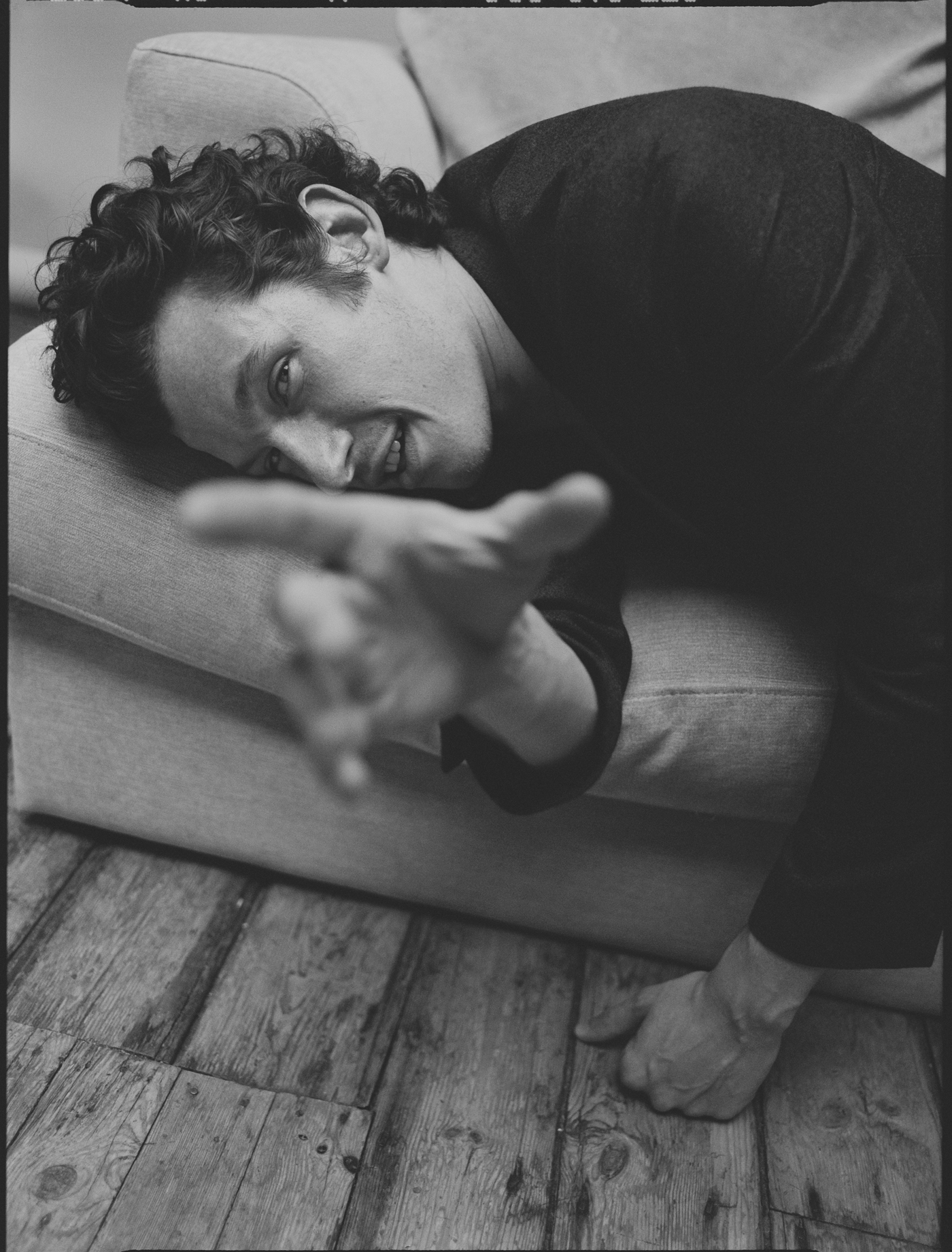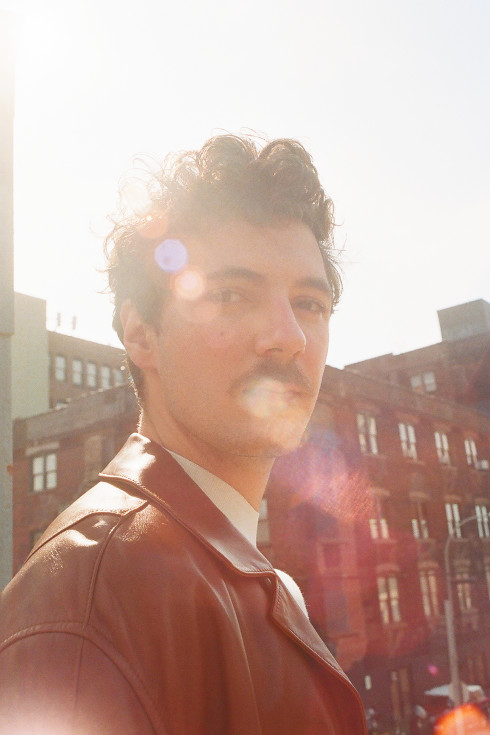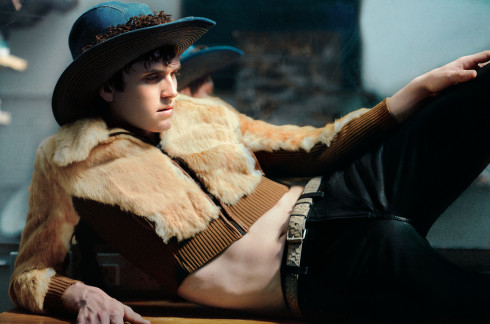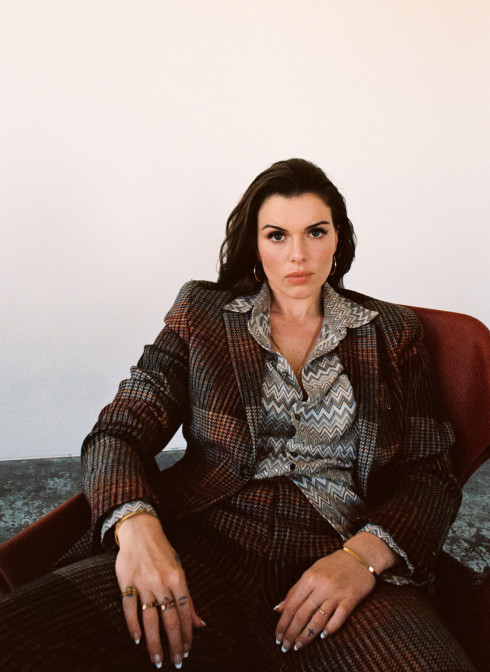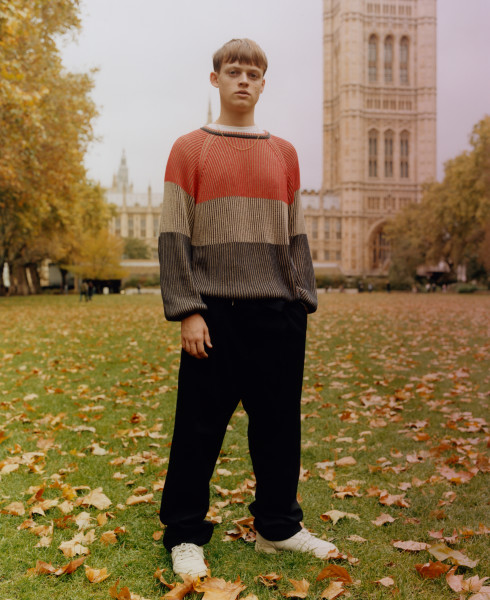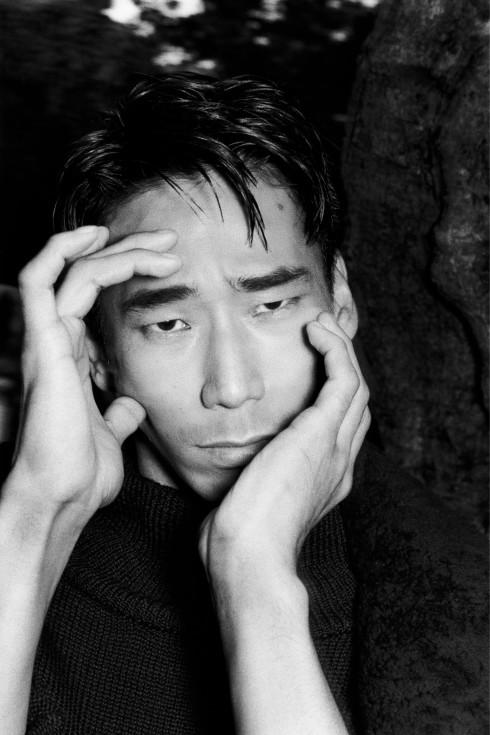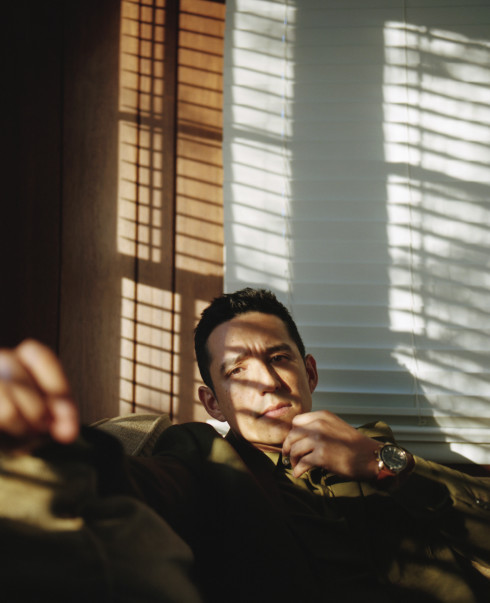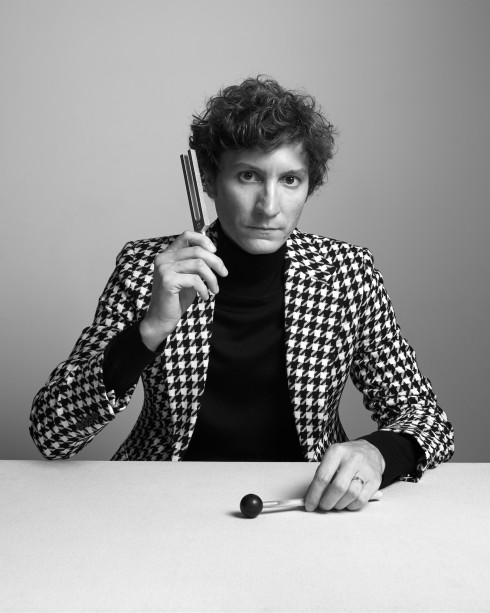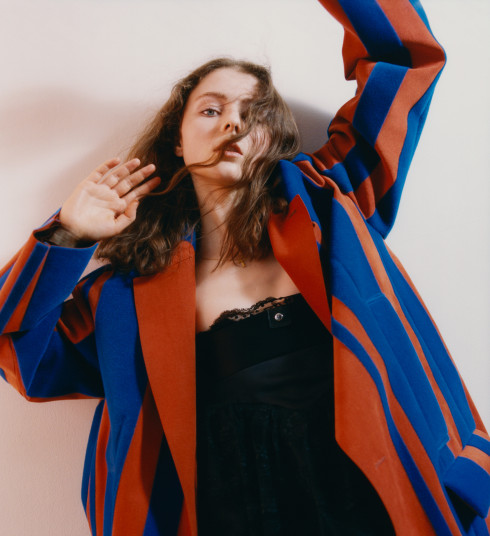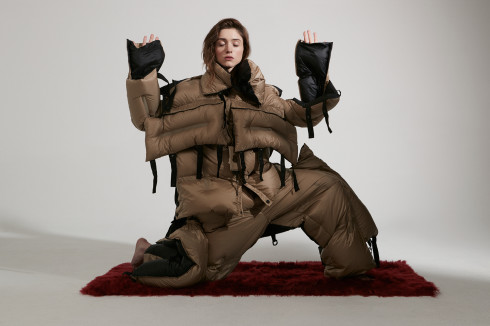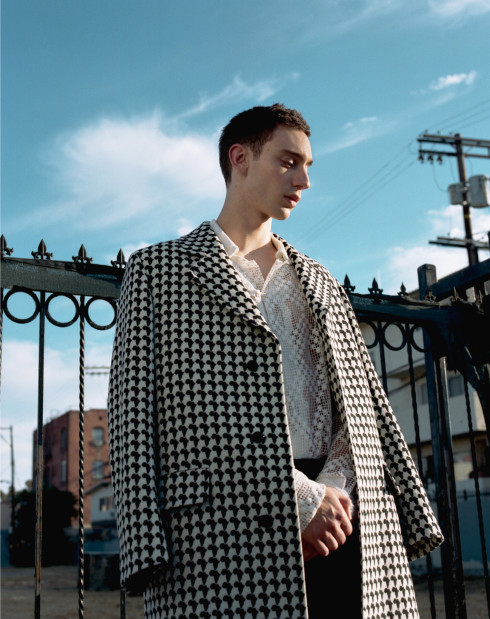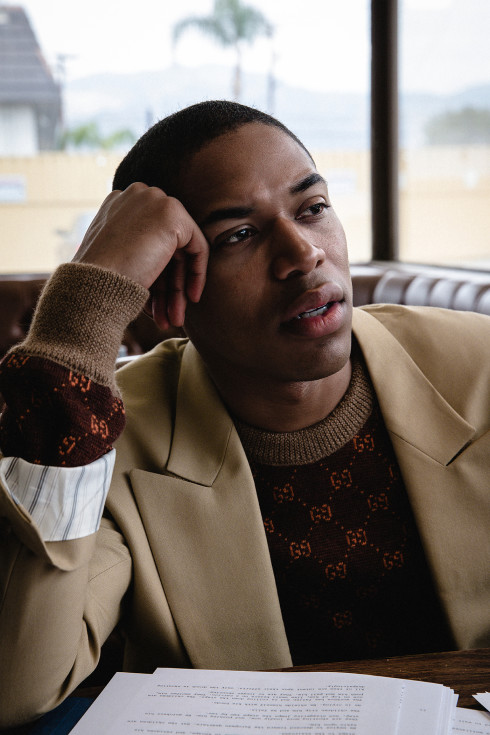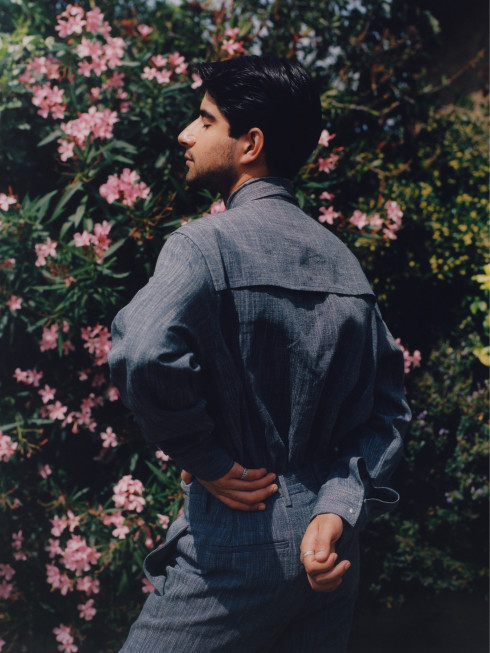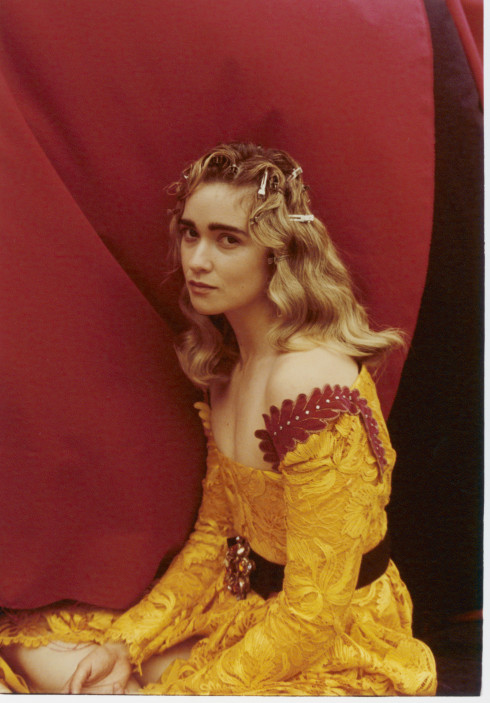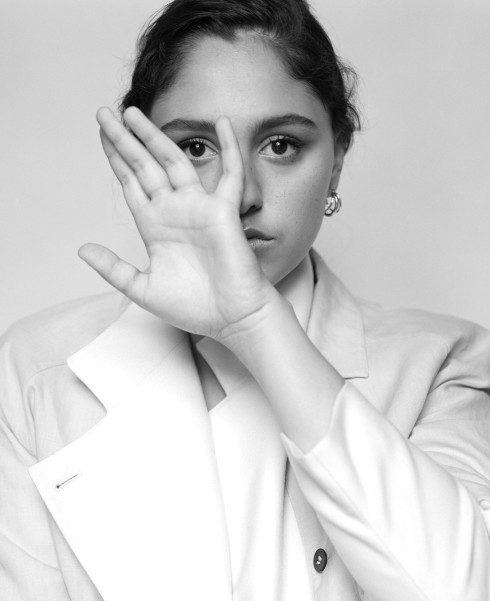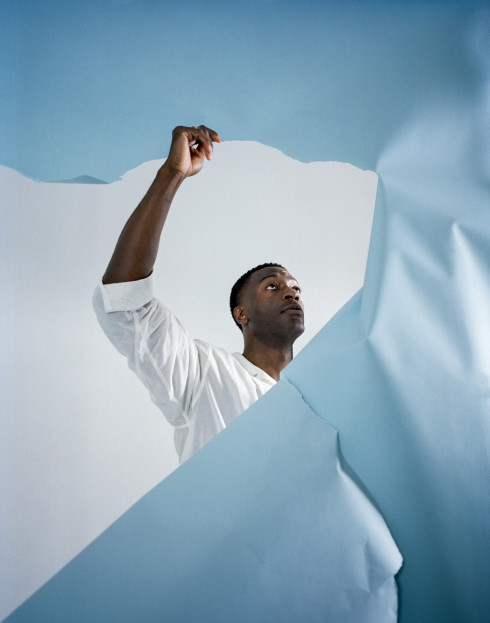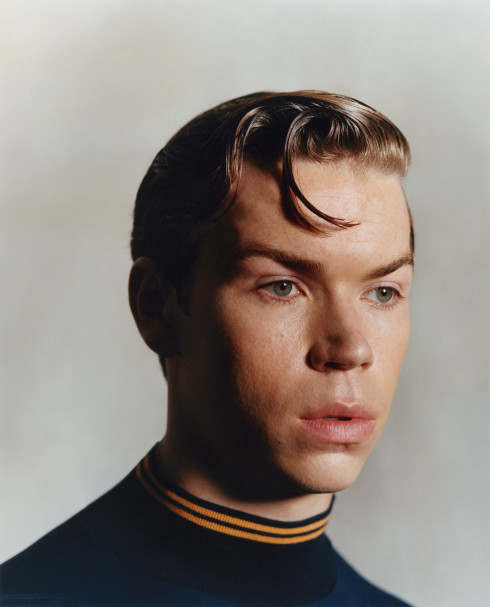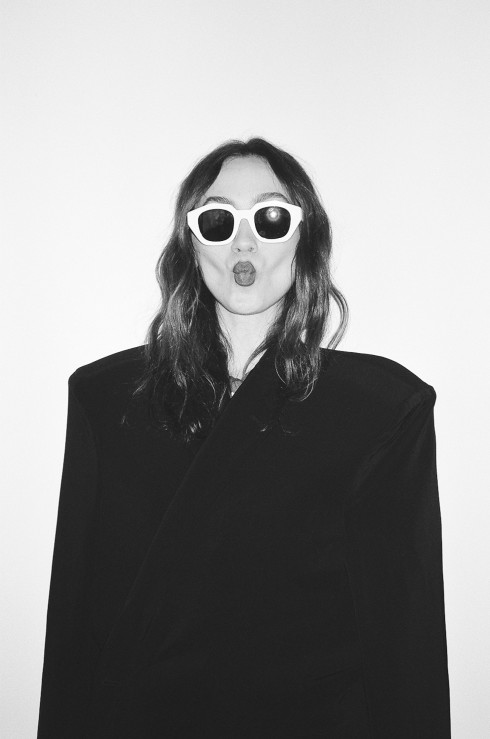
Vintage blazer by Acne Studios. Necklace by Astley Clarke.
- By
- Jonathan Shia
- Photography by
- Nick Dorey
Styling by Tara St Hill at Bryant Artists. Grooming by Roku Roppongi at Saint Luke Artists. Photographer’s assistant: Olivia Estebanez. Stylist’s assistant: Nadia Dahan.
CALLUM TURNER
In the new film The Only Living Boy in New York, from 500 Days of Summer director Marc Webb, the British actor Callum Turner plays Thomas, a sensitive young man longing for a girl who has a boyfriend, a woman who is dating a married man (his father), and a general sense of purpose in his life. A recent graduate with no plans, he has a tiny apartment on the Lower East Side, but he makes frequent visits to his parents’ expansive home uptown, paid for thanks to his father’s success running a publishing house. He falls in love with his father’s mistress, played by Kate Beckinsale, and their tumultuous relationship seems to offer yet another possible path forward to an indeterminate and blurry future.
The details may differ sharply from those of Turner’s own life—he was raised by a single mother in a west London council flat before leaving school to model and eventually making his way to acting—but he says he felt a close kinship to Thomas’s struggles to define himself. “There’s a line where he’s like, ‘I haven’t done anything with my life,’ and he really hasn’t up until then,” Turner says. “I remember the feeling of frustration, especially when I was seventeen, eighteen, nineteen, even twenty really. I had no idea who I was and what I wanted. I’ve probably only just learned who I am roundabout now.”
But these days, it’s safe to say Turner, now twenty-seven, has done quite a bit with his life. His modeling career took him to Japan and America on his own as a teenager and led to repeat appearances as the face of Burberry. His first feature film, Queen and Country, landed him at the 2014 Cannes Film Festival. Since then, he has acted opposite Patrick Stewart, Jeff Bridges, Michael Fassbender, Pierce Brosnan, Marion Cotillard, Daniel Radcliffe, and now Jude Law, Johnny Depp, Ezra Miller, and Eddie Redmayne, who plays his younger brother in the upcoming sequel to Fantastic Beasts and Where to Find Them. “I actually keep saying, ‘It feels like this is a biopic,’ because of the amount of detail in the world and even my character,” he says of his role as Theseus Scamander in the movie, another cornerstone in J.K. Rowling’s ever-expanding Harry Potter universe. “He’s only mentioned in the first film, but there’s pages and pages of writing about him and where he was born and where he went to school.”
Set in 1927, the as-yet-untitled film requires Turner to immerse himself in both Rowling’s highly detailed world of magic and an age nearly a century past, neither of which offer much leeway for mistakes. “It was a lot of research. I looked at pictures of fashions from the time and studied the color scheme, the costume design, the hair, and really tried to understand what his views would have been,” he says of the preparation process. “We worked with the script to see who this character is and what he stands for, what he believes and what he wants. Then you go into the wizarding part and just try to absorb as much information as possible.”
Turner came to the industry, like many actors, with a long-lived obsession with movies, stretching back to childhood favorites like Free Willy that he says he watched over and over again with his mother. “She was a single parent and that was our thing, a love of films,” he says.
One particularly memorable, if possibly scarring, encounter was with the dark 1999 comedy A Room for Romeo Brass, which starred Paddy Considine in his first role. “My mum sent me to the video store to just rent something and I came back with that,” he laughs. “Actually it was the most horrific, violent film, because it’s so realistic. I was crying in my mom’s lap. It was quite an experience, but that film and [Considine’s] character always stuck in my head. One day I would like to play characters like that in films like that.”
Initially hoping to become a footballer and playing in a semi-professional league for a season, Turner found his way to modeling at seventeen through a stroke of luck, and has kept on going ever since. “I was in college in a situation that I didn’t really want to be in, for the football basically,” he recalls. “My mum’s friend was a stylist and rang me up one day and was like, ‘What are you doing tomorrow?’ I said, ‘Nothing, I’m going to college,’ and he was like, ‘Well, do you want to come to Paris? There’s a modeling agency and they like your pictures.’ I remember I looked back at the college because I was standing outside of it and I was like, ‘Yeah, of course I want to come to Paris! Sure, I’ll do that.’”
He credits his busy years of “living in places, paying rent, and being a young man on my own in big cities” as a working model as a crash course in adulthood, helping him understand what it means to grow up. “Some people go to university and do that, but that was my university on the road,” he says. “When it started to slow down, I actually got my first acting job and I was like, ‘Alright, I’m going to stop modeling because I want that to be my priority.’”
After appearing in a number of short films, Turner made the move to television by landing the lead role in the 2012 British miniseries Leaving, playing a young man caught in a relationship with a married woman nearly twice his age. The next year, he was cast in his first movie as the protagonist in Queen and Country, John Boorman’s sequel to his Oscar-nominated Hope and Glory, as a young soldier trying to make his way in postwar England. The film, which also starred Get Out’s Caleb Landry Jones as his best friend and Vanessa Kirby—now memorably playing a wild Princess Margaret on Netflix’s The Crown—as his sister, offered a quick and deep immersion into the movie industry. “It’s funny because when I look back, it’s like, ‘That was how I was doing it then, I was just learning,’” he says. “You always learn, but I was really just at the beginning of my learning, and I’m very proud of it. It went to Cannes, it’s a John Boorman film. I remember at the end of the first week, one of the grips went up to John and was like, ‘I’ve been waiting forty years to work with you and that was a real pleasure, thank you very much.’ And I thought to myself, ‘This is my first film.’ It was obviously a really big deal and it was an amazing experience.”
Turner’s generous, wholehearted performance also helped quiet some of the early critics who demeaned his model-turned-actor trajectory, a stereotype he says he had to struggle to overcome by proving himself through his work. “It was tough. [In England,] it’s harder to break free of the norms or the patterns that are set than in America,” he says. “Modeling was just another thing for me. It was part of my history and it didn’t really bother me, but it actually really bothered some people. It’s interesting as a young man to be told you can’t do this and you can’t be that, and to be honest, I really wasn’t sure what to do. I was lucky that I was able to work and learn on the job.”
In the years since, Turner has demonstrated impressive range in his projects, from the neo-Nazi horror film Green Room to the blockbuster video game adaptation of Assassin’s Creed. He says he has a similar process to get into character no matter what the role, however, one that involves finding the perfect equation to understand each one’s personality. For the road movie Tramps, which premiered on Netflix earlier this year, it was a combination of Chris Bosh’s athleticism, soccer player Arjen Robben’s drive, and Kramer’s quirk from Seinfeld. In the television adaptation of War and Peace, Turner understood his Anatole as a mix of Justin Bieber and a “house cat that thinks he’s the most beautiful thing in the world.” “For Anatole, I did a lot of letting people open doors for me, whereas I’m the most English person in the world who would open the door for nine different people before I go out,” he laughs. “I felt like such a dickhead and it didn’t last long at all. I did maybe four or five weeks and I was like, ‘Ok, I’ve got the character.’”
Understanding Thomas from The Only Living Boy in New York proved to be a bit more challenging—but also invigorating. “What was fascinating was the fundamental part of who he was, that he was stuck,” Turner explains. “These massive truths are exposed that probably have been hindering his life and his mental state and stopped him from growing and being really and truly who he could be. That was the exciting challenge of trying to be Thomas Webb.”
That sort of self-actualization is something Turner has started to achieve of late as well, and it has provided him with the confidence to stay level-headed in the fickle and cruelly competitive business in which he now finds himself. “Everyone has their own path and there’s no right or wrong one in this industry,” he reasons. “It’s opinion-based. You might have ten people that are going to love you, but then you’ll have ten people that don’t. It was a slow start, but it never really mattered to me because I knew what I wanted to do, so it was just a question of how I went about it.”
The Only Living Boy in New York is out August 11.
- By
- Jonathan Shia
- Photography by
- Nick Dorey
Styling by Tara St Hill at Bryant Artists. Grooming by Roku Roppongi at Saint Luke Artists. Photographer’s assistant: Olivia Estebanez. Stylist’s assistant: Nadia Dahan.
